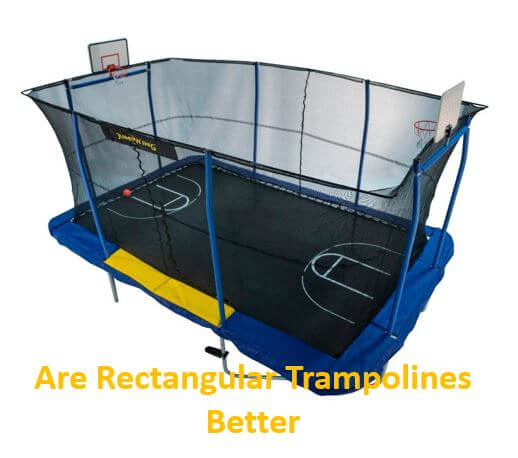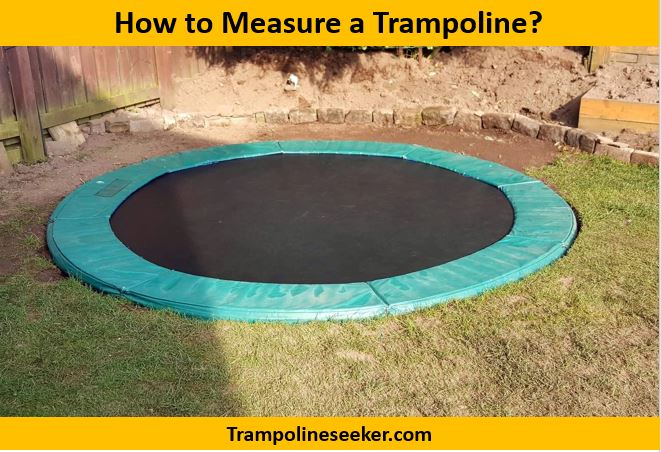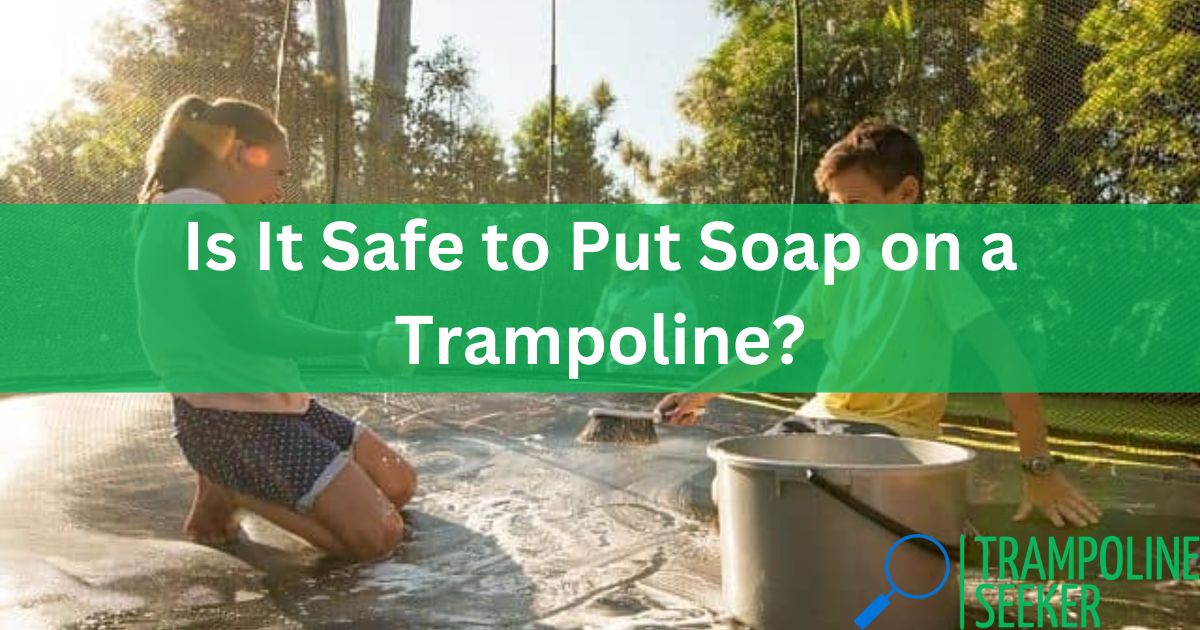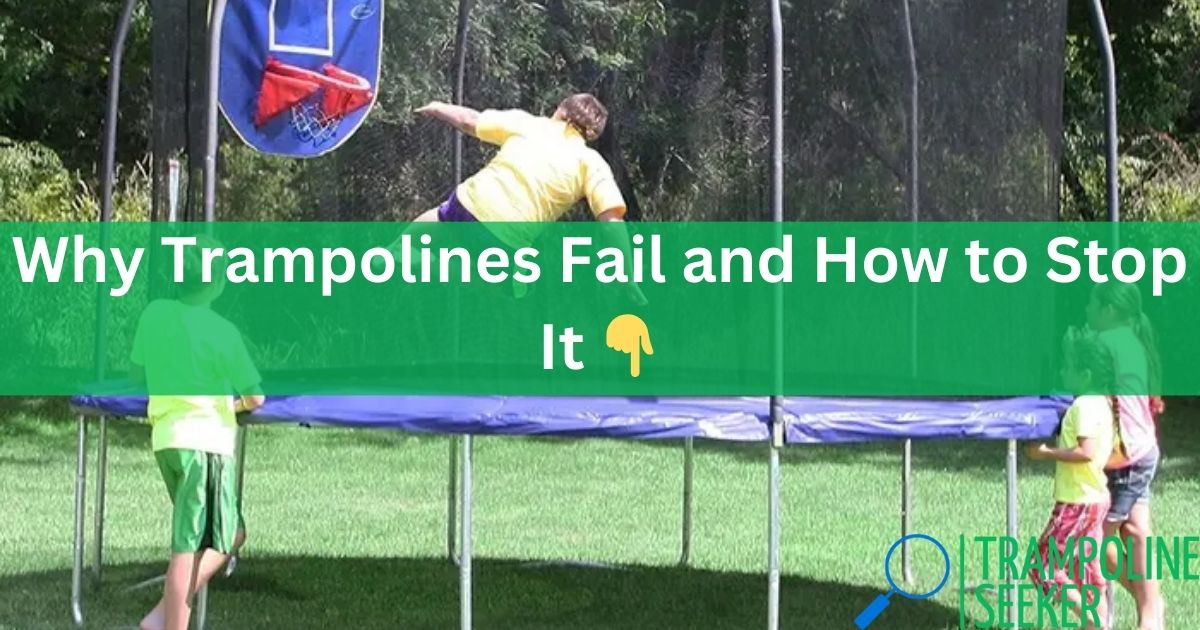Research on “Why Is My Trampoline Mat Loose?”
Research Hours: 5
Number of Researched Sources: 18
Is your trampoline lacking its normal spring and height lately? Has your once bouncy mat started feeling saggy and lifeless? A stretched out, loose trampoline mat is a very common issue for avid jumpers. But don’t despair – with the right troubleshooting, you can get your trampoline’s bounce back in action.
But why your trampoline mat loose?
In short, the two main reasons trampoline mats become loose and saggy over time are stretched out springs and loose bounce cords underneath the mat. Frequent jumping can overextend the steel springs, causing them to lose tension and recoil. Meanwhile, the elastic cords that tie the mat to the frame can become feeble and unable to hold the mat taut.
In this comprehensive guide, we’ll cover the top reasons your trampoline mat may have lost its bounce and stretch. You’ll also discover straightforward solutions to tighten and restore a worn out mat so you can keep on jumping.
What Makes a Trampoline Mat Become Loose and Saggy Over Time?
A trampoline is engineered for bounce through specific components working together. But certain parts can deteriorate with frequent use, leading to a flat, unbouncy mat. The two main factors are:
1. Overstretched Springs

The coiled springs that connect the mat to the frame are key for providing recoil and bounce. But much like a Slinky toy that gets permanently stretched out, trampoline springs become unable to retract back to their original taut shape after excessive use.
This is because the steel metal coils become overextended through repeated stretching motions. Over time, the spring coils remain in a permanently elongated state.
You’ll notice the overstretched springs have widened gaps between coils, instead of clinging tightly together. They’ve lost their ability to recoil and contract for optimal bounce.
Unfortunately, trampoline springs cannot regain their original elasticity and tension once overused. So replacement is the only resolution for shot springs.
2. Loose Bounce Cords
On the trampoline’s underside, a series of ropes or ties called bounce cords connect the jumping mat to the frame. Their job is keeping the mat held taut.
Similar to how rubber bands eventually wear out, these cords lose their elasticity and go slack after excessive stretches and impact. They become too feeble and loose to keep the mat tightly secured.
Loose bounce cords under the mat are a common cause of sag. Luckily, you can often restore tautness by tightening cords before they require replacement.
How Do I Tighten Up a Loose, Saggy Trampoline Mat?
If your trampoline mat is lacking bounce and feels saggy in spots, tightening the bounce cords underneath is your first course of action. Adjusting loose cords can tighten up the mat quickly without expensive part replacements.
To access the underside, you’ll need to flip the trampoline over – a two person job. Before starting, have these supplies handy:
- Vise grip pliers
- Masking tape
- Needle nose pliers
Follow these steps to tighten saggy mat cords:
- Open vise grip pliers and wrap masking tape around the jaws, leaving a 1/8″ gap between. This prevents slippage when gripped.
- Carefully upend the trampoline 180 degrees with help.
- Find a bounce cord by looking inside the knot block cavity. Pull the cord end inward so the knot faces center rather than outward.
- Firmly grip the cord with vise pliers right at the junction with the knot block to hold taut.
- Use needle nose pliers to untie the overhead knot at the cord’s end.
- Make a new knot closer to the block for a tighter stretch. The nearer to the block, the tighter.
- Release pliers once satisfied with the new stretch.
- Repeat untying, pulling tighter, and re-tying knots around the whole mat perimeter. Space knots evenly.
Other Common Trampoline Mat Problems and Quick Fixes
In addition to a loose, sagging mat, you may encounter other issues that affect the bounce and jumping experience. Here are some frequent problems and how to get your mat back to its lively sweet spot:
Mat Completely Loses Bounce
A mat that loses all spring and feels dead underfoot usually points to one culprit – deteriorated springs.
Rusty Springs
Since trampoline springs are made from steel, surface rust is their natural enemy. Rust forms when humid air penetrates the protective zinc coating, corroding the underlying steel.
Significant rust causes springs to lose their vital elasticity and recoil. You’ll notice rust in small flakes or large swaths.
Removing minor rust with a stiff scrub brush and rust treatment may restore some bounce. But deep rust often requires replacing springs. Match old spring size and gauge.
Missing Springs
While you can jump with a spring or two missing, this puts undue strain on remaining springs and leads to premature wear.
Plus, unequal tension across the mat from missing springs can damage the bouncing surface. Inspect springs routinely and replace any that are missing promptly.
Mat Rips or Holes
Trampoline mats develop holes or tears over time from weather damage, jumping impact, or pets. But you can often repair rips and restore bounce. Here are two easy options:
Sewing Repair
Use a trampoline patch kit for UV-resistant patching materials made specifically for trampoline mats. Just follow these simple steps:
- Cut a circular patch at least 2 inches wider than the hole. This provides overlap.
- Seal edges by melting with a lighter to prevent fraying.
- Secure patch over hole with pins so it doesn’t shift when sewing.
- Whip stitch around the entire patch perimeter.
No-Sew Repair
For a no-needle fix, use household go-to duct tape:
- Thoroughly clean mat top and bottom around torn area so adhesive sticks.
- Apply duct tape patch to underside of mat first.
- Cover tear on top side with another piece of duct tape.
- Use book or weight to press down overnight so tape bonds strongly.
Expert Insights: FAQs About Saggy Trampoline Mats
Still have questions about restoring bounce and lift to your trampoline? Here are answers to some frequently asked questions:
Do trampoline mats lose bounce over time?
Absolutely! With frequent use over months and years, trampoline mats progressively lose bounce and elasticity. The main contributing factors are:
- Spring stretching and rust
- Weakening and tearing of mat fabric
- Excess weight straining components
Inspect mats and springs regularly. Replace springs promptly at first signs of deterioration to prolong mat life.
Can you “break in” a new trampoline for better bounce?
Interestingly, brand new trampolines often benefit from a short break-in period to reach prime bounciness.
The steel springs require some stretching and impact cycles before providing optimal recoil and lift. So bouncing frequently when first setting up a trampoline can enhance bounce performance.
How do I know if my springs need replacing?
Signs that saggy mat springs need replacing include:
- Visibly enlarged gaps between coils
- Permanent elongation compared to new springs
- Significant flaking rust and corrosion
Replace individual damaged springs promptly to reduce strain on the mat. For a complete refresh, replace all springs at once.
The Takeaway: Revive Your Trampoline Bounce
Has your trampoline lost its joy and height due to a stretched out, saggy mat? With a few targeted troubleshooting steps, you can tighten loose parts and restore lift and elasticity once again.
Use this guide’s techniques to diagnose and fix underlying issues like shot springs and cords. Or call on a professional for complicated repairs so you can keep enjoying trampoline fun for seasons to come!
Related Articles:













